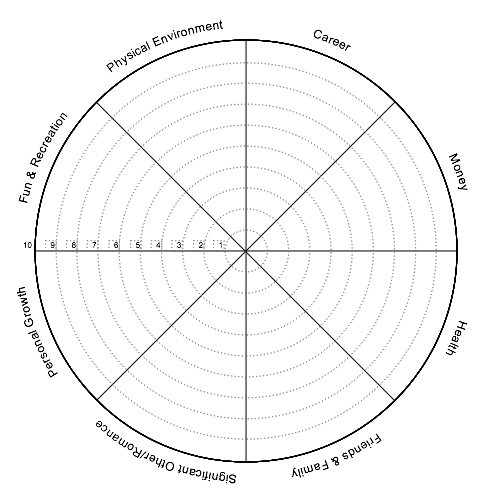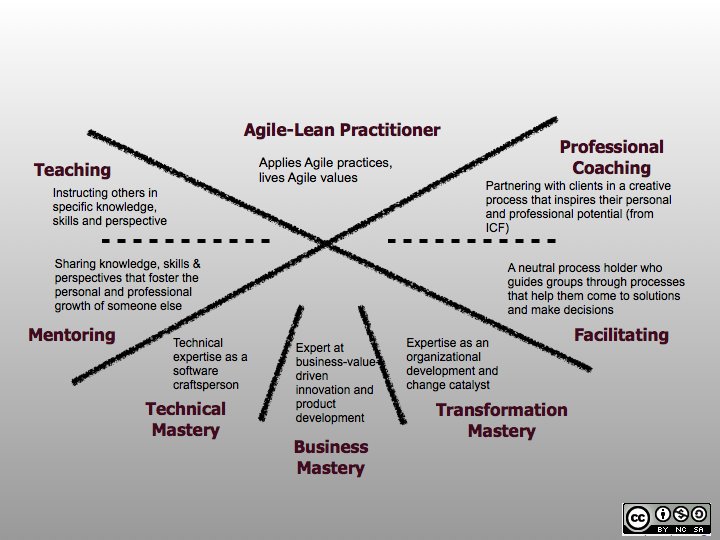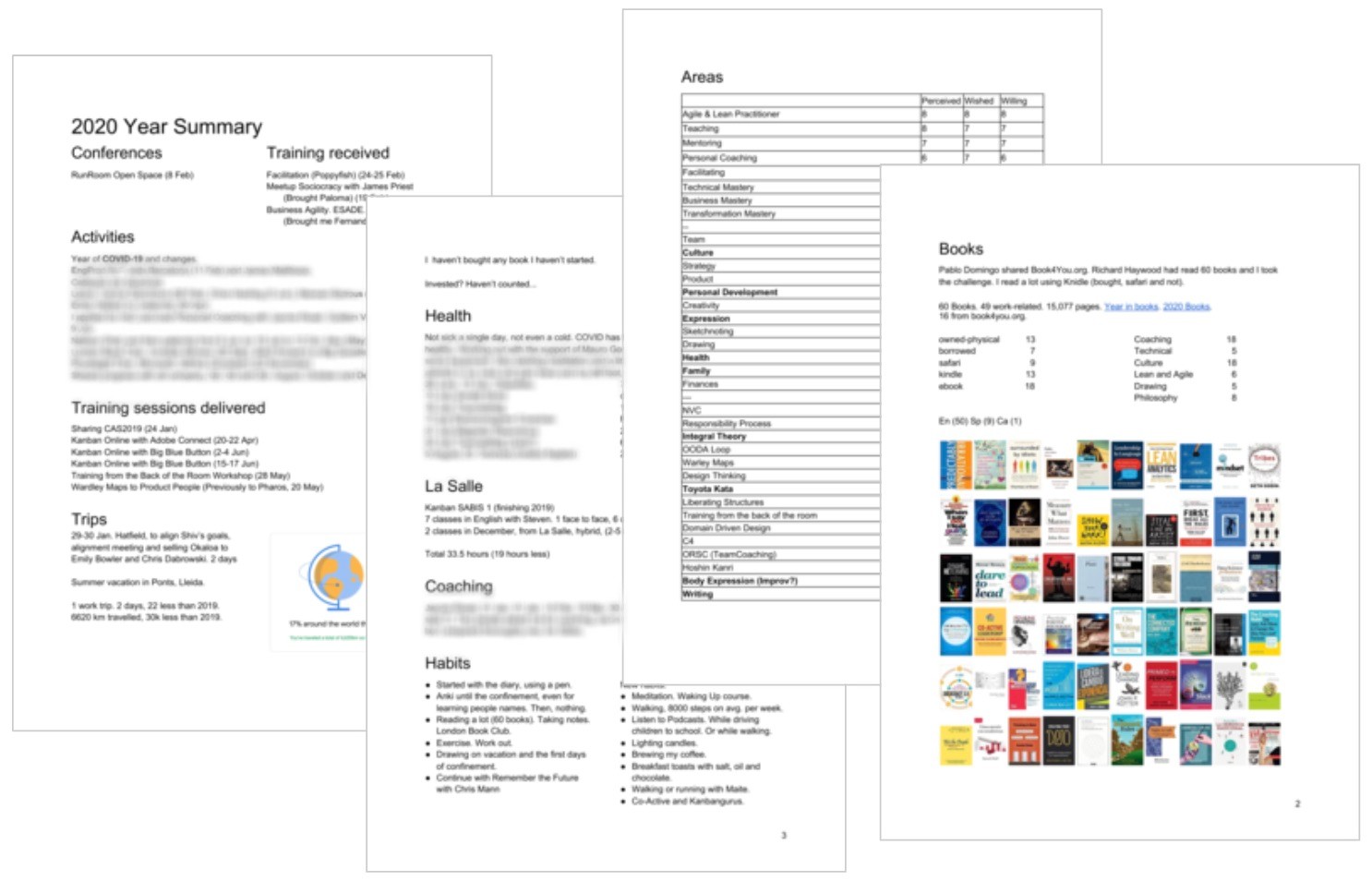A personal retrospective
9 min read
“The unexamined life is not worth living”, said Socrates. Those of us who have been playing around with agile methodologies are familiar with the term retrospective. According to the Agile Aliance [1]:
The team meets regularly, usually adhering to the rhythm of its iterations, to explicitly reflect on the most significant events to have occurred since the previous such meeting, and take decisions aiming at remediation or improvement.
I also want to improve at a personal level and that’s why I became fond of dedicating reflection time by the end of the year. I tried a higher frequency, but I realised that the time I take to reflect and the moment of the year made more effective a yearly retrospective and some ad hoc catch-ups whenever I need them.
The purpose
I don’t try to set my New Year’s resolutions when I do the retro, even though it was something I did in the past. The intention is to reflect objectively on the year that has finished, considering the whole year, the events that took place and how I felt about them. I try to consider all the aspects that are important to me in that moment of my life, like work, family, finances, travel, sport, health, drawing, programming or learning. They have been changing.
To be objective it’s important to review data. I use consciously my diary (Google Calendar): I take care of the things that get written so I can review them at a later point. When the year ends, I review the conferences I’ve attended, the meetups I went, the books I’ve read, the exercise I did, the visits to the doctor, the big changes, the events at work. I can do that because I noted that down, I accept or decline invitations and I keep my calendar tidy.
To get more data points I also use Slack (and I search what I posted in public channels), Google Maps Timeline, Goodreads and Instagram.
I reflect on my year, for my whole self. I know some people do a work retrospective, but I prefer to see life as a single-integrated-complex thing, the wholeness referred by Laloux [2].
Usually, I recall things I completely forgot: I went to the doctor because of that, that person joined the team, that colleague left us, I spoke there. You will read what you wrote down.
The setup
Christmas time is important to me. It is a cold time in my city, school holidays and my birthday, so I usually take some vacation days. As the days are shorter and it is time for me to remember my missing ones, it provides an ideal timing for slowing down and introspect.
I don’t plan to do all my thinking in a single sitting, but dedicate one hour here half an hour there. Last year I finished my retro on 19 January, and the year before it was on 30 January. This year I finished on 5 January. Am I improving there? I don’t care, it’s not important if next year I finish later.
I’ve done the retrospective using pen and paper. I’ve tried also mind maps and sketchnotes but lately, I’m using a Google Doc. I create the structure of the things I want to reflect upon and I fill the gaps.
The different facets of life
To discover what’s important for me I tried the Wheel of Life that is used in coaching [3]. The wheel of life I’ve used identifies the following aspects: Career, Family & Friends, Significant Other, Fun & Recreation, Health, Money, Personal Growth and Physical Environment. Of course, you can identify other aspects for your wheel [4].

The idea is that you score from 0 to 10 how you rate your level of satisfaction with that aspect of your life. It’s not about scoring 10 in everything but to have a balanced life. Seeing all the aspects at once you can assess better what aspect you want to work on, if any.
Another tool I’ve used to inspect areas of interests comes from the Agile Coaching world: the Agile Coaching Competency Framework [5]. That framework, created by Lyssa Adkins, outlines the different dimension that Agile Coaching has to consider and, in my case, the aspects I wanted to develop. The dimensions are Agile-Lean Practitioner, Professional Coaching, Facilitating, Teaching, Mentoring, Technical Mastery, Business Mastery and Transformation Mastery.

In my particular case I know that creativity and creation are important, the classes I deliver in the university, my reading and my exercise habits.
Once I’ve identified the areas of my life, I put them on a table and I rate them, from zero to ten, in three different categories:
- Perceived: What’s the level of satisfaction I have with my performance or knowledge in that area
- Wished: What’s the rating I would like
- Willing: What’s the amount of energy I am willing to dedicate to improve in that area
It’s a similar exercise as the wheel of life, but noting also my desire. I am going to note what are the gaps between Perceived and Wished where Willing is also high. These are the areas of my life where I will put more effort in finding books, courses, meetups or practising. It’s not a list of New Year’s Resolutions but it’s a tool I use when choosing a new book or deciding my next pet project. Of course, it’s a reference and will change during the year, but at least I reflected about it and avoided inertia.
The template
The template I’ve used since reviewing 2018 contains the following points:
- Conferences attended
- Training received
- Activities (Highlights of the activities performed at work in Engineering Practices)
- Training sessions delivered (at work)
- Trips (and I capture the distance made according to Google Maps Timeline because too much travel is bad for me)
- Books I’ve read (with some statistics, and I get the book covers from Goodreads)
- Health (including the episodes of back pain during the year and some summary of the training sessions)
- University Classes (I want to keep in touch, but I don’t want to be drowned)
- Coaching (the coaching sessions I’ve performed as a coach or as a coachee)
- Habits (my life is full of useful routines)
- Drawing and creativity (new drawings I’ve created, lately on Instagram)
- Areas (rated)
- Log (a detailed log of the things that have happened, from my Calendar, Slack or somewhere else)
- Summary
The summary
The final part of the retro is answering three questions:
- What was important to me in <previous year>?
- How important is that to me now?
- What is important now?
This is the part that is less data-oriented but makes a bigger impact in me. It makes me reconnect with the present after reflecting about the past.
The whole exercise makes me recall the events of the year, as a whole, avoiding recency bias. The good moments are vivid again, as well as the painful ones. There are always surprises and discoveries but it always helps me to start the year with more clarity.

Toni Tassani — 21 March 2022
This article was originally published on 8 February 2021 on the company intranet.